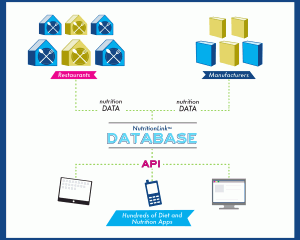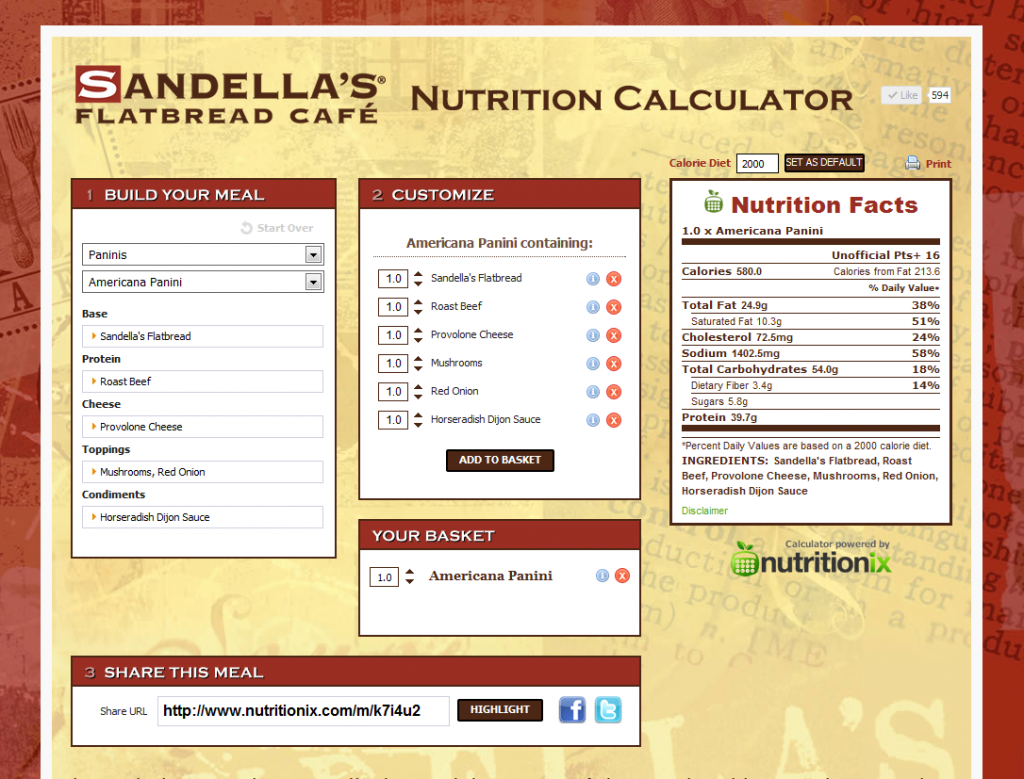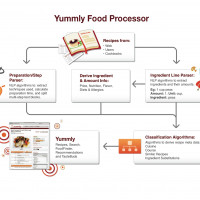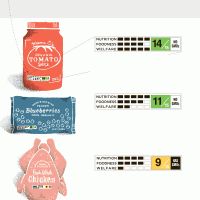 Changing diets and consumer preferences are forcing restaurants and food brands to find ways to share nutrition and ingredient information with their customers. Also, restaurant chains with 20 or more locations are now required to provide detailed nutrition information on their menus, thanks to a provision upheld in “Obamacare.” But many don’t have have central databases to easily organize and publish this data.
Changing diets and consumer preferences are forcing restaurants and food brands to find ways to share nutrition and ingredient information with their customers. Also, restaurant chains with 20 or more locations are now required to provide detailed nutrition information on their menus, thanks to a provision upheld in “Obamacare.” But many don’t have have central databases to easily organize and publish this data.
Similarly, startups building recipe, grocery, and restaurant nutrition and discovery tools face major challenges with obtaining accurate consumer packaged good (CPG) data and nutrition data. These startups are forced to clean and restructure data on 7,500 basic items from the USDA’s National Nutrient Database or to license expensive – $100,000+ annually- and often outdated, CPG databases from companies like ESHA, Nutribase, Gladson and FoodFacts.
Nutritionix is trying to tackle this problem by building a suite of tools that allow restaurants and food brands to organize and publish their nutritional data, thereby making it easier for consumers to interact with it. Through Nutritionix’s widgets – interactive menus, allergen menus, nutrition calculators and nutrition transparency ratings- customers can get accurate nutrition and allergen information for menu items. The company is currently working with 24 restaurants, including McAlister’s Deli, ChickPea and zpizza. They also recently announced they will be launching a Nutrition API pilot program in late October to give developers free access to their nutrition data, which will extend the reach of any participating company’s data. The API will include 40,000 menu items from 350 restaurants, 10,000 items from the USDA SR24 database and 10,000+ CPG items from over 1,500 food manufacturers. Currently, the company already has over 150 developer on their API waiting list.
I got a chance to chat with co-founder Matt Silverman about Nutritionix’s business model and their API.
Danielle Gould: What problems are you solving?
Matt Silverman: For consumers: Solving the problem of how to find accurate nutrition and allergen information for foods you eat while on the go.
For restaurants and food brands: Solving the problem of how to allow your customers to interact with your nutrition data, and ensure that anyone can eat at your location regardless of their diet preference or allergies, as long as they are able to access and interact with the nutrition data.
For developers: Allowing them to focus on the interface and execution of their diet and nutrition apps, without having to worry about creating their own nutrition database.
DG: On your website, you announced a lofty goal of enlisting 1,000 restaurants by the end of 2012. How close are you to meeting that goal?
MS: We currently list nutrition or allergen data for at least 350 restaurants. Shortly after that announcement, we also started listing data for food manufacturers, and we already have 1,500 food manufacturers listed as of today. Restaurants are a lot slower than we anticipated to add, and many of them are scrambling to still analyze their nutrition information before the FDA rules set in by 2013.
DG: What is your value proposition for restaurants and food manufacturers?
MS: We provide two essential tools for restaurants and manufacturers:
1. An enterprise-class web-based platform to internally organize all of your nutrition data, including recipe components. This is crucial for any food business to adequately organize complex nutrition data.
2. We provide incredibly consumer-friendly widgets that food brands use on their website to turn nutrition into a marketing tool. By making their nutrition data interactive with our widgets, they actually drive more traffic to their website, and allow customers to figure out how to eat at their locations regardless of their dietary restrictions.
DG: Do you verify the accuracy of data? If so, how?
MS: Currently, each brand is responsible for the accuracy of their data before submitting it into our system. In most cases, it is actually a registered dietitian who represents the brand and submits the data to us. We are working on a number of few algorithms that will scan our datasets to look for pattern mismatches in nutrition data, which will ultimately help us eliminate any data entry errors in the future.
DG: You recently announced that you will be releasing an Nutrition API pilot program in late October. What data will developers be able to access through the API?
MS: In Phase 1 of our API release, developers will be able to access:
- Restaurant nutrition
- 350 restaurant concepts, with over 40,000 menu items
- 10,000 common food items from the USDA SR24 database
- 10,000+ consumer packaged good items from over 1,500 food manufacturers
DG: What is your business model?
MS: We charge a subscription fee to food brands to use our interactive tools, and to be listed in our directory. This way we are able to give free access to developers, which encourages great growth in nutrition app development, which greatly increases exposure for any of our participating brands by linking them into millions of health-conscious consumers.
DG: What are the most interesting things you’ve learned, or greatest challenges, you’ve faced building Nutritionix?
MS: One of the most interesting things we’ve learned is just how much consumers appreciate it when companies do not treat nutrition as an after thought, but instead make it truly usable to customers. We get a lot of people writing in to us thanking us for making it possible for them to actually sort through a menu to find Gluten Free items, or to find a meal that is low in sodium at their favorite restaurant.
One of the greatest challenges of our business is selling such a new product to restaurants and food manufacturers, as most of them do not even know that they need it until we demo it for them.








